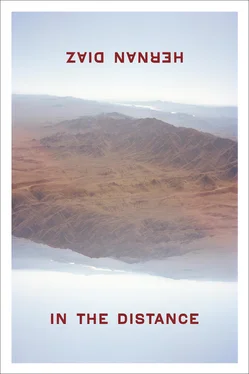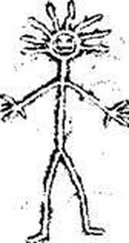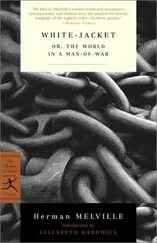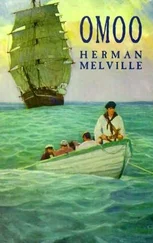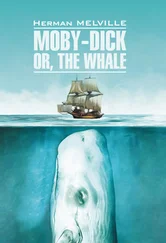Before moving on, he was tempted to smash the mirror to take a shard with him, but the majesty of the dresser deterred him. As an afterthought, he also considered that its owners would surely come back for it at some point. He took one last look and walked away.
With every day, as he kept moving north, bunchgrass became more abundant, and eventually the land turned yellow. Water was less infrequent, but Håkan still drank it with reverence. Gadflies and mosquitoes spurred him and the burro on—the assaults when they stood still and unprotected by a smoky fire were so vicious that they once sent the burro bucking uncontrollably across the plains. Trees and thick bushes, however, grew scarce, and soon Håkan ran out of fuel. Charqui and raw wild mushrooms were his fare. Dogs, rodents, and birds became a habitual sight in that grassy extension that challenged the sky, and Håkan felt the joy of being once again a living thing among living things.
A few days later, once the desert had yielded to the prairie, Håkan stumbled upon a rocking chair swaying back and forth in the open wilderness, nudged by the breeze. For a long time, as he approached it, he could not understand the meaning of chair, as if the object itself were a word on a page made up by those signs that would forever remain a cipher for him. He kept looking at the chair. What does chair mean? He reached it and touched it. He sat on it. The vast plains receded. He felt out of place, and there was something thrilling and comical about this. But at the same time, he also felt lonelier than ever—smaller, frailer.
Although Håkan did not keep close track of time, he believed that, according to Lorimer’s directions, he should meet the trail fairly soon. And sure enough, three or four days after finding the rocking chair, Håkan finally ran into a path. He was confused. If emigrant trains were like traveling cities, this track seemed nothing more than a footpath and just about one palm deep. It could never have been the result of oxen and wagons, and yet it was so regular in its construction and course, it could only be man-made. He followed the path north for a few leagues until suddenly, behind a thicket atop a small hill, he saw, for the first time, buffalo. They followed each other down their trail one by one, in single file, with a slow step and great deliberation. Beyond this stately procession, as far as the eye could see, the heath was darkened with buffalo, grazing or wallowing in muddy basins. It seemed to Håkan that these beasts were made out of two different bodies ineptly put together. Their hind legs and quarters were positively equine—slender and toned—but with the last rib began a transformation, and, as if nature had changed its mind halfway through it, the animal swelled in a stupendous, monstrous fashion, suddenly becoming thicker and taller. Its back rose steeply and abruptly, leading to a head so massive (could that dense, anvil-solid block of bone that seemed impenetrable even to sound contain a brain or any flesh at all?) that, compared to the animal’s smaller back end, it seemed to have been dreamed onto the rest of the body. Below a pair of sharp horns, a pair of black eyes had been bored into either side of the skull. If any of the beasts that Håkan had seen in America had ever resembled his brother’s fabulous inventions, that creature was the buffalo.
He pressed on. As the days went by, the sight of buffalo skulls, some of them bleached by the elements and scaly with lichen, became frequent. Håkan supposed that the pioneers must have hunted those beasts in great numbers, and the jettisoned goods he found over the following days—a trunk with china, bedsteads, a spinning wheel, cupboards, several cast-iron stoves, a large carpet he unrolled on the grass—seemed to confirm the proximity of the trail. Sometimes it rained, and it was always a miracle.
It was one evening, after one of those showers, that Håkan heard the church music. It came to him with the wind, in rags and tatters, like a torn flag. Although the sounds had the texture and flavor of church music, the melody was unlike anything he had ever heard—sad and incomprehensible.
Following the intermittent organ music, Håkan found three Indian lodges. He stopped a few hundred feet away and remained still, making sure he would be seen, and once he knew his approach could not be taken for an ambush, he proceeded toward the tents. Smoke puffed out of the top flaps of the lodge in the middle. They were cooking meat. As he got closer, he saw four or five men lying on the ground. Sitting next to them, a man played a harmonium. He was tall, lithe, and scrupulously neat. His hair was coiled in a bun on the back of his head, and from his neck descended a loose chest plate made out of coins of different sizes. His chest was naked under this ornament, but he had a whitened buffalo robe over his shoulders. With his left hand, he pumped the instrument while his right fingers slowly ran across the keyboard, playing an erratic melody. Now and then, he would pause to drink from a jug, which he sometimes rolled over the keyboard, creating discordant clusters of sound that made the air oscillate. He was drunk, and it was clear he would soon join his unconscious companions on the dirt. He briefly noticed and then ignored Håkan’s presence. Around the tents—tattered buffalo hides over frames of poles—meat hung to dry on hair rope and leather cords. Going around the lodges, Håkan found a few women on their knees, shaving the hair off newly skinned hides with sharp flint, scrubbing out the brown flesh from the inner side, and rubbing the brains of the buffalo into the skins, probably to soften the leather. When they noticed him, they were unsurprised. He was invited into one of the tents and given roasted meat from some ribs hanging off a rope over the fire. The women sat and watched him eat. When the fire started to sink low, someone flung a piece of buffalo fat on the coals. A wild blaze flashed up, revealing every last object in the tent—a stone mallet, silverware, a portrait of a corseted lady, piles of hides and robes, a decanter with a faceted glass stopper, arrows, a stranded chandelier, bows, a stuffed owl in a glass dome, a mortar, a swaddled baby, a sewing machine, shields decorated with birds and buffalo, empty bottles and jugs. The organ music stopped. Håkan finished his repast, and the women walked him out. The drunken men were blots on the dark ground. Håkan gave the women some flour as thanks and walked into the night.
One morning, he woke up to find that he had slept a stone’s throw away from a makeshift graveyard. The tombstones, three planks stuck upright in the ground, bore words that had been burned into them with a hot iron. Although unable to read them, Håkan could see the despair in those unsteady lines. Two of the plots must have been for very young children. The earth on all three had been torn up and raked by hungry paws. Håkan found the contrast between the improvised, impermanent nature of the graves and the final, definite condition of those in them immensely sad. Over the next several days, shallow graves, few of which had eluded the violation of wild beasts, and heaps of ungainly and impractical objects strewn throughout the plain became a frequent sight. Then the smell came. After such a long time in the odorless desert (he had long ceased to notice the few habitual scents of his body, his animals, and his fires), the stench of civilization hit him like a solid mass, rather than a vapor—a smell at once slippery and barbed, piercing and thick. And yet, despite the corruption and the decay, the miasma brought back a sense of life. Rancid meat, feces, sour milk, sweat, porridge, vinegar, rotten teeth, bacon, yeast, fermenting vegetables, urine, bubbling lard, coffee, disease, wax, mold, blood, broth. Two days Håkan traveled against the swelling reek until he saw, drawn against the edge of the prairie, a long, low creeping line.
Читать дальше
